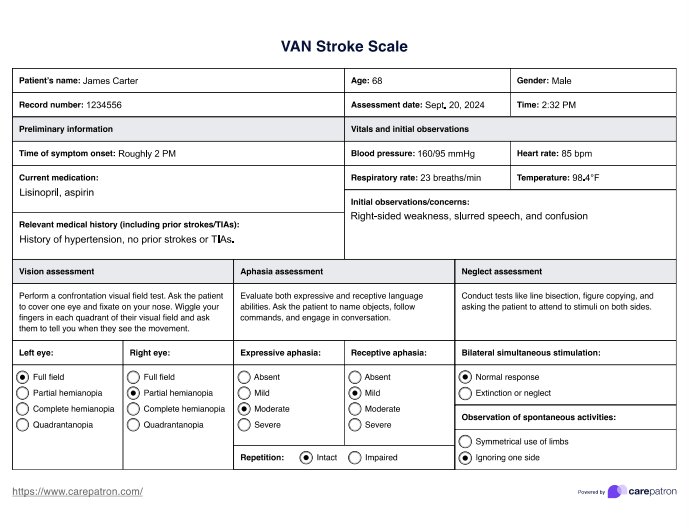The VAN Stroke Scale evaluates vision, aphasia, and neglect to quickly assess for large vessel occlusion strokes, often requiring rapid intervention.

VAN Stroke Scale
Use our VAN Stroke Scale template to quickly identify stroke patients by assessing Vision, Aphasia, and Neglect, guiding urgent care.
Use Template
VAN Stroke Scale Template
Commonly asked questions
The Los Angeles Motor Scale (LAMS) is a prehospital stroke assessment tool focusing on motor function to identify severe strokes.
For the VAN Stroke Scale to be positive, at least one abnormal finding in vision, aphasia, or neglect is enough to suggest the possibility of a large vessel occlusion stroke.
EHR and practice management software
Get started for free
*No credit card required
Free
$0/usd
Unlimited clients
Telehealth
1GB of storage
Client portal text
Automated billing and online payments











